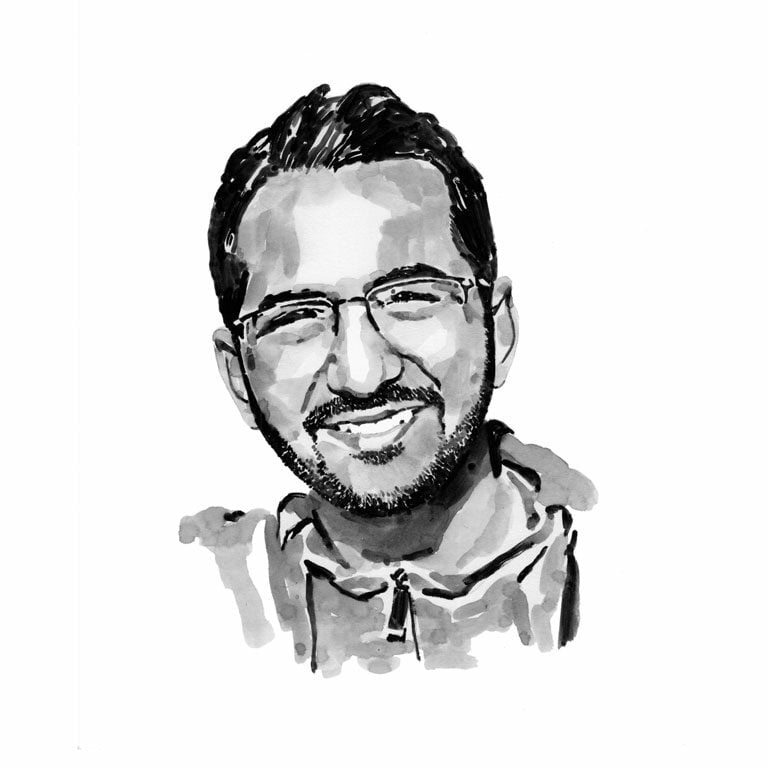Imran Samad

Who I am
Since I grew up in the landlocked hills and mountains of the eastern Himalayas in India, people often ask me how I ended up studying marine and aquatic systems. With advances in technology and communication, the world has become a ‘global village’ where learning about – and dreaming to become – anything is possible. After watching documentaries and reading articles, I became awestruck by the vastness of the oceans and the magnificence of the animals that inhabit them. Inspired by ocean scientists and conservationists, I started moving towards becoming a marine researcher, one step at a time. Currently, I am a PhD student at the Indian Institute of Science, studying how large marine animals like sharks, rays and dolphins are directly affected by fishing when they are caught (sometimes unintentionally) in fishing nets, and what we can do to save them.
I have previously studied the effects of dams on river dolphins and I have explored more than half of India’s coastline to understand how these charismatic animals and fisheries are interconnected. Apart from being a researcher, I am a curious person who likes to learn and read in various disciplines. I like to explore fantastic places, meet new people and have memorable experiences.
Where I work
I work in a number of coastal areas around India, which allows me to draw a holistic picture of fisheries and marine megafauna dynamics in the country. An important site for my research work is Malvan in the state of Maharashtra, on India’s west coast. Malvan is a small town harbouring a range of coastal habitats, including sandy and rocky shores, mangroves and estuaries. The continental shelf extends to about 100 kilometres (62 miles) from Malvan’s coast into the Arabian Sea, where a great deal of fishing takes place. These productive waters are highly biodiverse and support magnificent species such as scalloped hammerhead shark, whale shark, Indian Ocean humpback dolphin and Indo-Pacific finless porpoise. Humpback whales are also known to migrate along the coast from the Middle East to southern India.
Located at a comparable latitude but on the east coast of India is the city of Visakhapatnam in the state of Andhra Pradesh. Visakhapatnam’s coastline is equally biodiverse, but its continental shelf extends only about 35 kilometres (21 miles) into the Bay of Bengal. As a result, other than common coastal species like bull shark and the common blacktip shark, many deep-water species such as sperm whale and spinner dolphin are also found around Visakhapatnam.
Being rich in biodiversity, both sites have been designated Important Coastal and Marine Biodiversity Areas by the Wildlife Institute of India. Both are also important fish-landing centres, where catches from different kinds of fishing vessels, including large trawlers, motorised gill-netters and small artisanal fishing boats, are frequently bought and auctioned.
What I do
To understand fishery dynamics, you have to adapt to the lifestyle of the fishers. Fishing vessels go out to sea at different times of day for different periods, but most of them return with their catch either in the early morning before sunrise or in the late evening at sunset. Documenting what and how much the fishers have caught requires waking up early every day and being present at the fish-landing site before the fishers arrive, since the catch is sold within hours of arrival. Fishers are often happy to interact and share their experiences, but it requires spending time socialising and getting to know them, which is often over evening tea at local stalls. These chats can range from talking about politics to revealing exciting stories about the ocean, and can also help you learn the local language and culture, which everyone appreciates.
The process of understanding complex coastal systems requires as much time sitting at the computer as it requires being in the field, collecting data. Whereas the non-monsoon season (from October to April) is spent in the field socialising with fishers, the monsoon season is spent in the city, in the comfort of my house and workplace, trying to make sense of the data I’ve collected. This can involve staring at the computer screen, scratching my head for hours or writing down my findings and experiences in various forms. Either way, trying to reveal the whole truth about magnificent animals and breathtaking oceans requires extreme effort and at least a full calendar year, but is also filled with excitement and something new every day.
